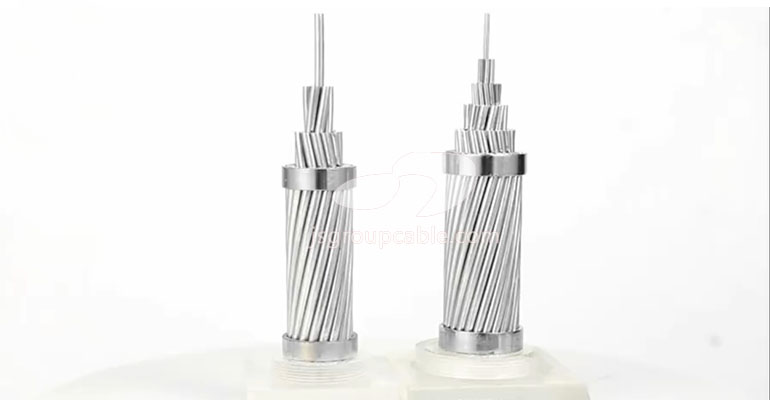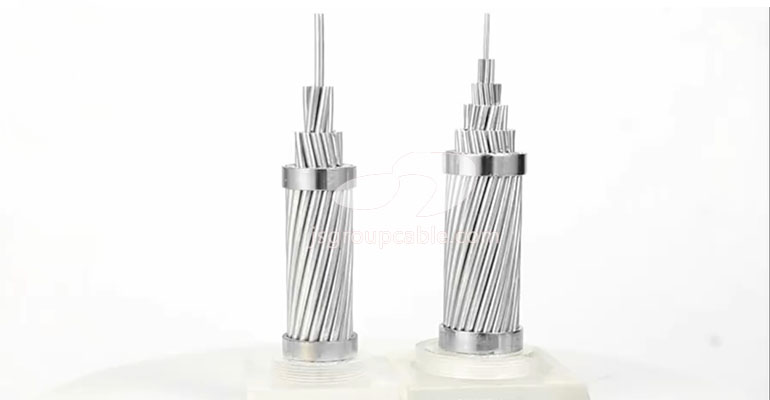- Offices Time:24 Hours Online
- Email:[email protected]
- WhatsApp:+8618339938759

Posted on November 1, 2022
What are the classifications of bare conductors?
Bare conductors are mainly used as conductive cores for various wires and cables, such as round single wires, flat wires, copper stranded wires, aluminum stranded wires, and as conductive parts in electrical equipment such as motors, electrical appliances, and transformers, such as busbars, Ladder row, special-shaped row and flexible wiring, etc. Previously, we analyzed various aspects of the performance of bare conductors, and obtained the classification and characteristics of bare conductors. So today, according to the shape and structure of the product, bare conductors can be divided into round single wire, stranded wire, shaped wire and flexible wiring. By the way, I will talk about the wiring of bare conductors.
1.Bare conductor classification
(1)Round single line
Round single wire includes: round copper single wire, tinned round copper soft single wire, round aluminum single wire, round aluminum alloy single wire, round copper clad steel single wire and round aluminum clad steel single wire.
The tensile strength of hard wire is twice as large as that of soft wire, semi-hard satin has a certain tensile strength and thin elongation, and the elongation of soft wire is high. Hard wire is mainly used for overhead Wires, semi-rigid wires and soft wires are mainly used for the cores of wires, cables and magnet wires, and are also used in other electrical products.
Tinned round copper flexible single wire has good corrosion resistance and welding performance. Mainly used for wire, cable core and shielding layer and electrical appliances.
The round copper-clad steel single wire has high tensile strength, and the corrosion resistance is similar to that of copper and aluminum. Silver-plated copper-clad steel wire has great advantages in high-frequency communication. Used for overhead conductors, carrier lightning conductors for communications, large span conductors and high temperature wire cores.

(2)Type line
Profiles include: hard flat copper wire, hard flat aluminum wire, soft copper busbar, hard copper strip, soft copper strip, trapezoidal copper bar and aluminum tram wire.
The mechanical properties of copper, aluminum flat wire and busbar are the same as round wire. The structural shape of the busbar and the flat wire is rectangular. Copper and aluminum flat wires are mainly used to manufacture coils of motors and electrical appliances. Copper and aluminum busbars are mainly used for confluence, and can also be used for other electrical products.
Silver copper alloy row has better wear resistance, better mechanical strength and hardness than copper. Commutator segments for water coolers, transformers and DC motors.
Copper-aluminum alloy tram lines are mainly used for electrical transportation overhead lines, electrified railways, and urban tram overhead lines.
(3)Soft wiring
Flexible wiring includes: copper brush wire, copper stranded wire, soft copper braided wire and copper antenna.
Copper flexible wiring has the characteristics of softness, vibration resistance, bending resistance, etc. It is mainly used as brush connection wire, as lead wire, ground wire, rectifier and thyristor lead wire, as well as small electric furnace and electrical equipment. antenna.
2.Bare conductor wiring
(1) The height of indoor bare conductor wiring from the ground should not be less than 3.5 meters, and when using mesh shielding fences, it should not be less than 2.5 meters.
(2) When the bare conductor is laid parallel to the same side of the pipeline, it should be laid on the top of the pipeline, and the net distance from the pipeline that needs frequent maintenance should not be less than 1.5 meters.
(3) When the bare conductor is protected by a barrier, the clear distance between the barrier and the bare conductor shall meet the following requirements:
a.When shielding with a mesh no larger than 20 × 20 mm, it should not be less than 100 mm.
b.It should not be less than 50 mm when shielded with a plate-shaped barrier.
(4) The clear distance from the bottom of the unshielded bare conductor to the deck of the crane cart should not be less than 2.2 meters. Bare conductors laid above the crane maintenance section should be provided with mesh barriers.
(5) Except for the auxiliary conductor of the trolley wire itself, the bare conductor should not be laid on the same support as the trolley wire of the crane.
(6) The clear distance between the bare conductors and the bare conductors to the building surface should not be less than the values listed in the table below.
The distance between the fixed points of the rigid conductor shall meet the requirements of dynamic stability when passing the maximum short-circuit current.
Jinshui Wire&Cable Group provides customers with safe, effective and excellent power transmission and distribution wires and cables and value-added services with advanced equipment and technology. As a wire and cable manufacturer, we adhere to the tenet of providing customers with quality services and produce for customers high quality products.
Post categories
Most Popular Posts
-
The 136th Canton Fair welcomes you to participate!
October 12, 2024 -
High temperature cable introduction
July 26, 2024 -
Kenya Power and Energy Exhibition 2024
June 11, 2024 -
Introduction of rubber sheathed cable
June 5, 2024





